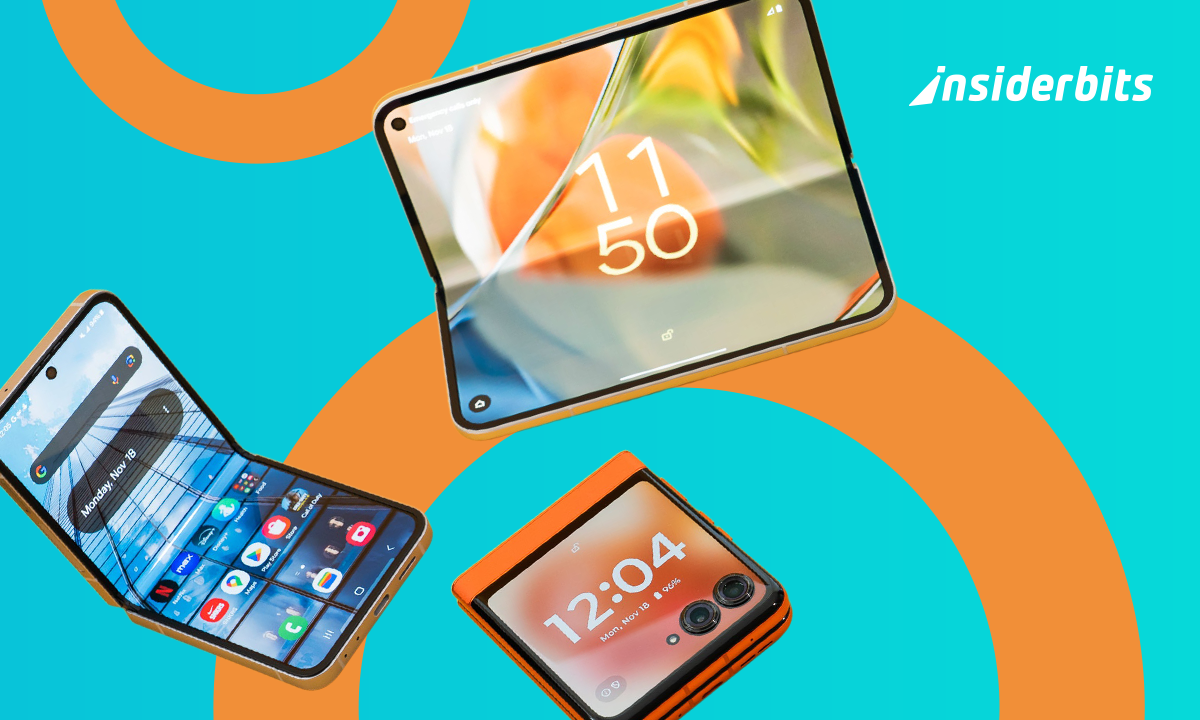Foldable tech is already a growing force that’s changing the way people interact with mobile devices. Screens that bend, flip, and unfold are now redefining the very structure of phones and tablets, unlocking possibilities that standard designs simply couldn’t offer.
While early models were met with skepticism around durability and practicality, recent advances have silenced many critics. Devices can now shift from pocket-sized convenience to full-screen immersion in seconds. With growing investment from major tech companies and increasing interest from consumers, foldable tech is carving out a new standard in digital innovation.
- Technology For Small Businesses: Essential Apps
- Top 10 Technology Trends to Watch Out for in 2025
- AI Companion Apps: Building Emotional Connections with Technology in 2025
What Foldable Tech Means for the Future of Devices
Foldable tech signals a fundamental change in how devices adapt to human needs across both form and function.
Now, devices are no longer confined to a single layout or rigid use case, which opens the door to hybrid experiences previously out of reach.
By allowing screens to expand or collapse, foldables blur the line between categories. A phone can double as a tablet for reading or work, while a compact device can unfold into a full-size video player or gaming console.
Moreover, developers and designers are also rethinking how interfaces respond to folded states.
For instance, apps can shift layout mid-use, split-screen functions can thrive without visual clutter, and multitasking becomes more intuitive than ever.
For users, this flexibility means fewer compromises. Instead of carrying multiple devices or struggling with limited screen space, they get a seamless solution that shifts shape to match the moment.
Overall, foldables are beginning to redefine expectations for what a mobile device should actually do.
How Foldables Are Transforming Smartphones and Tablets
Mobile design is being redefined by foldable tech, turning conventional expectations upside down through devices that bend and expand in real time.
Phones that once fit neatly in a pocket now stretch into immersive displays that rival tablets.
This duality creates a practical advantage for users who want both portability and productivity.
With these upgrades, multitasking gains a new edge with foldables. Devices like the Samsung Galaxy Z Fold support multiple app windows simultaneously, enabling side-by-side document editing or video conferencing without switching tabs or sacrificing visibility.
As more developers embrace foldable interfaces, app experiences become richer.
Later, layouts will adapt automatically to open or closed modes, creating an environment where form no longer restricts function but enhances it instead.
Key Brands Investing in Foldable Tech Innovations
Tech giants have entered a quiet arms race, each pushing the limits of what foldable devices can achieve through material engineering and interface reinvention.
At the forefront, Samsung is refining its Galaxy Z series with each release while investing in longer-lasting hinges and screen durability.
Then, Motorola has taken a nostalgic yet forward-thinking route by reviving its iconic Razr in foldable form.
The updated models blend sleek form factors with flexible OLED displays, appealing to users who crave both innovation and retro design.
Also, Google’s Pixel Fold introduces a new layer of AI integration, using smart software to anticipate user behavior as the screen orientation changes.
This approach reflects a trend where foldables are not just hardware experiments, but smart ecosystems tailored to modern digital habits.
Alongside, some Chinese manufacturers like Huawei and Oppo are also shaping the global scene, experimenting with outward-folding designs and rollable screens.
These alternatives highlight the diversity of paths that foldable tech might take before the category fully stabilizes.
Challenges and Limitations Still Facing Foldables
Despite impressive strides in design, foldable devices continue to face obstacles that keep them from becoming mainstream staples.
To begin with, price remains one of the most prominent barriers, with many models costing significantly more than their non-folding counterparts.
Durability is another concern, especially around the hinge mechanism and the flexible display.
Although materials have improved, users still worry about long-term wear or visible screen creases that develop after repeated folding.
Meanwhile, app optimization also lags behind hardware advancements. Some apps don’t fully adapt to folding transitions, leading to awkward layouts or crashes, which can limit the fluidity that users expect from high-end devices.
Lastly, larger displays often require more power, but design constraints restrict battery capacity, forcing manufacturers to find balance between thickness, lifespan, and foldability.
How Foldable Tech Is Changing the Device Landscape – Conclusion
Foldable tech has evolved from a futuristic concept into a viable segment of consumer electronics, offering a new way to interact with screens that adapt to users rather than the other way around.
Although challenges persist, especially in pricing and longevity, the foldable revolution is clearly underway. Staying informed about these changes helps you anticipate the next wave of mobile experiences.
En rapport : Next-Gen Smartphones: The Best Flagship Phones Coming in 2025
Enjoyed this article? Save the Insiderbits blog to your favorites for the latest tools, creative tech tips, and photo editing breakthroughs.





